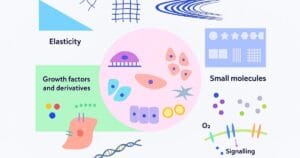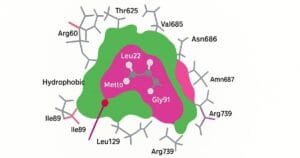
COMPETITIVE EXAM MCQs SERIES of ENVIRONMENTAL SCIENCE for UGC-NET/JRF, SLET, ARS, GATE, and other entrance tests – Electrical Energy from Solid Waste.
Syllabus Outline
- Characteristics of waste suitable for energy recovery.
- Pre-treatment and segregation of waste for energy production.
- Incineration: principles, types of incinerators, and energy recovery.
- Gasification: process, types of gasifiers, and energy output.
- Pyrolysis: technology, products, and energy potential.
- Anaerobic digestion: process, biogas production, and electrical energy generation.
- Landfill gas recovery: collection systems, treatment, and energy conversion.
- Comparison of biological and thermal conversion methods.
- Integration of mechanical sorting with biological treatment.
- Energy recovery potential from MBT plants.
This quiz contains the concept-based most frequently asked 25 MCQs of “Electrical Energy from Solid Waste“. Each question has a single correct/most appropriate answer.
*****
1. RDF in solid waste management stands for:
a) Recycle-Derived Fuel
b) Reduce-Derived Fuel
c) Refuse-Derived Fuel
d) Resource Description Framework
2. Which process is used to recover energy from non-recyclable plastics?
a) Composting
b) Pyrolysis
c) Vermicomposting
d) Landfilling
3. MSW with a higher moisture content would likely result in:
a) Increased methane production and lower landfill stability.
b) Decreased methane production and faster waste decomposition.
c) No significant change in gas production but slower waste degradation.
d) Reduced leachate generation and improved landfill performance.
4. LCA of incineration with mechanical biological treatment (MBT) for solid waste disposal would consider factors like:
a) Efficiency of energy recovery vs. production of compost.
b) Landfilling requirements for residual ash vs. digestate.
c) Air emissions from incineration vs. greenhouse gas production from MBT.
d) Operational costs of incineration vs. marketability of compost.
5. Waste with a high heating value is desirable for:
a) Composting.
b) Landfilling.
c) Refuse-derived fuel production.
d) Mechanical biological treatment.
6. What is the advantage of using refuse-derived fuel over conventional fossil fuels?
a) Lower carbon emissions
b) Higher energy content
c) Greater availability
d) Easier handling
7. Which technology is commonly used for converting biodegradable waste into biogas?
A) Pyrolysis
B) Gasification
C) Anaerobic digestion
D) Incineration
8. How does biogas contribute to sustainable waste management practices?
A) By increasing landfill capacity
B) By reducing dependence on fossil fuels
C) By accelerating waste decomposition
D) By promoting illegal waste dumping
9. What role does catalysis play in pyrolysis for waste-to-energy conversion?
a) Enhancing waste sorting efficiency
b) Improving biogas production
c) Facilitating chemical reactions
d) Minimizing waste generation
10. What are some challenges associated with the biological conversion of syngas in waste-to-energy processes?
a) Genetic modification limitations
b) Impurities in the syngas feedstock
c) Lack of interest in biofuel production
d) Inadequate funding for research
11. What is the key challenge for municipal solid waste conversion into bio-crude and derivative biofuels?
a) Developing stable microbial systems
b) Advanced separations for selective isolation of target compounds
c) Enhancing landfill management strategies
d) Increasing waste generation
12. Which component of municipal solid waste is most suitable for energy recovery through combustion?
a) Metals
b) Plastics
c) Glass
d) Ceramics
13. In a waste-to-energy plant, what is the function of a flue gas treatment system?
a) To sort waste materials
b) To remove pollutants from exhaust gases
c) To shred waste into smaller pieces
d) To generate steam for turbines
14. What is the typical efficiency range for electricity generation in modern waste-to-energy plants?
a) 5-10%
b) 15-25%
c) 30-40%
d) 45-55%
15. Which process involves the thermal decomposition of solid waste in the absence of oxygen to produce syngas?
a) Incineration
b) Gasification
c) Composting
d) Landfilling
16. What is the calorific value of municipal solid waste typically measured in?
a) Watts per kilogram
b) Kilowatt-hours
c) Kilocalories per kilogram
d) Kilohazan per kilogram
17. Which of the following factors has the least impact on the energy content of municipal solid waste?
a) Moisture content
b) Organic content
c) Inorganic content
d) Waste density
18. What is the function of a turbine in a waste-to-energy plant?
a) To burn waste
b) To separate recyclable materials
c) To convert steam into electricity
d) To compress landfill gas
19. Which gas is predominantly produced during the thermal gasification of solid waste?
a) Methane
b) Mixture of hydrogen and carbon monoxide
c) Carbon dioxide
d) Nitrogen
20. In a waste-to-energy facility, what is the use of the heat generated from burning waste?
a) To melt metals
b) To generate steam
c) To dry solid waste
d) To reduce waste volume
21. What is the typical temperature range required for efficient solid waste incineration?
a) 100-200°C
b) 300-400°C
c) 800-1000°C
d) 1500-2000°C
22. Which component in municipal solid waste has the highest calorific value?
a) Food waste
b) Paper
c) Plastics
d) Glass
23. What is the main purpose of using a scrubber in a waste-to-energy plant?
a) To increase combustion efficiency
b) To clean flue gases
c) To dry solid waste
d) To separate metals
24. Which of the following statements best describes the waste hierarchy concept?
a) Prioritizing landfilling over recycling
b) Focusing on waste-to-energy as the primary solution
c) Reducing, reusing, and recycling waste before disposal
d) Using composting as the main waste treatment method
25. Which waste management practice has the lowest energy recovery potential?
a) Incineration
b) Gasification
c) Composting
d) Anaerobic digestion
*****
Previous: Solid Waste Processing and Recovery
Next: Disposal of Solid and Hazardous Waste
References
- Agarwal, S.K. (2005) Solid Waste Management, APH Publishing Corporation, 1st edition.
- Reddy, P.J. (2011) Municipal Solid Waste Management: Processing, Energy Recovery, Global Examples, BS Publications, 1st edition.
- Chandrappa, R., & Das, D.B. (2012) Solid Waste Management: Principles and Practice, Springer, 1st edition.
- Klinghoffer, N.B., & Castaldi, M.J. (2013) Waste to Energy Conversion Technology, Woodhead Publishing, 1st edition.

